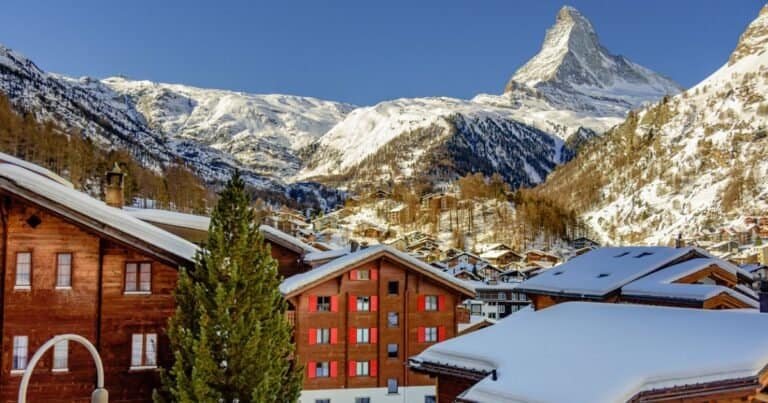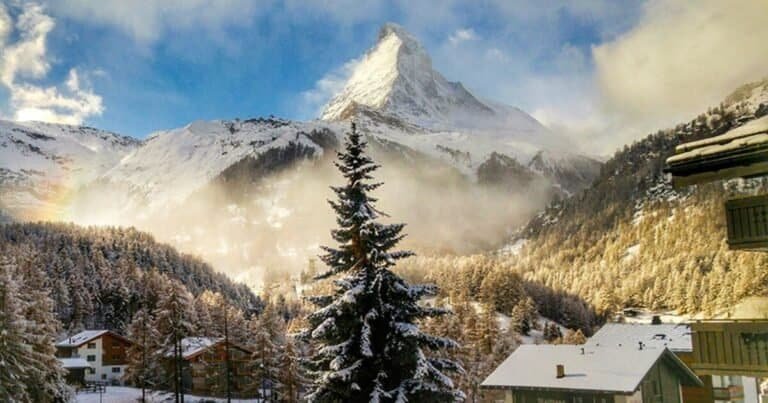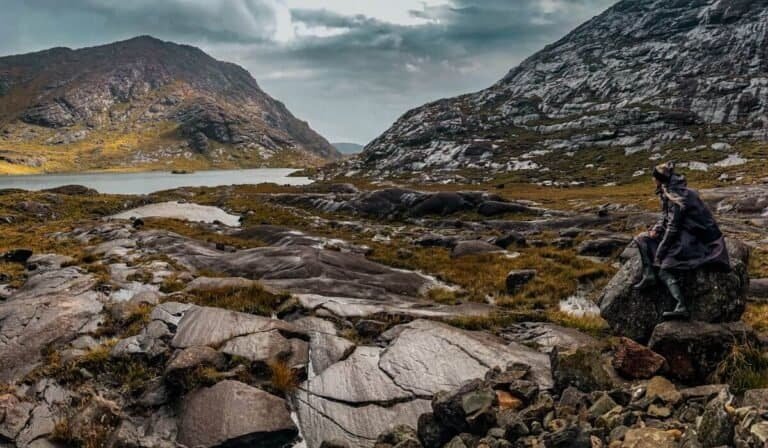Wondering Which Are The Best Mountains In Scotland?
We’ve got all the details!
Scotland, with its rugged landscapes and breathtaking highlands, is a haven for those with an adventurous spirit. With so many mountains in Scotland to choose from, each with its unique character and challenges, how do you possibly pick between them?
In this article, we’re going to embark on a journey across Scotland, scaling the heights of its 11 most captivating mountains. From the iconic Ben Nevis to the distinctive peaks of The Cobbler, these mountains offer unparalleled experiences and views that will leave you awestruck.
Whether you’re a seasoned mountaineer or someone looking for your next hiking quest, these 11 best mountains in Scotland promise to awaken the adventurer within you. So, grab your hiking boots and let’s begin this exciting ascent!
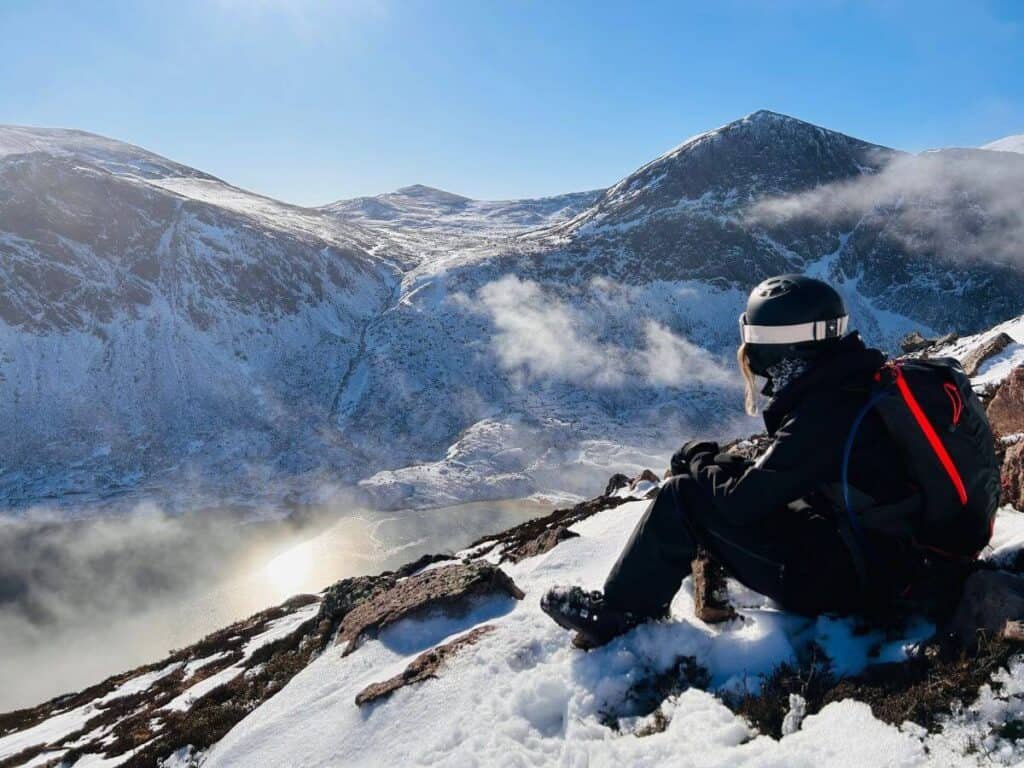
Are There Any Mountains In Scotland?
Scotland is the most mountainous country in the United Kingdom. No matter where you’re based in Scotland, you won’t be too far away from some peaks, even if you’re in a city. Most of the mountains in Scotland, certainly the higher peaks, sit in the northern half of the country, known as the Highlands.
Some of the most spectacular and challenging mountains can be found in the northwest highlands, mainly on the Isle of Skye. The Isle is the largest of all the Islands and sits on the West Coast of Scotland. Skye is the only Scottish Isle to be connected to the mainland by a bridge, making peak bagging that little bit easier.
11 Best Mountains In Scotland For Adventurers
Whether you’re looking for an intermediate hike with great rewards, a tough challenging summit, some low-level sport climbs or a gruelling winter ice climb, the mountains in Scotland have it all.
Here are our top 11 mountains in Scotland to cover all bases:
1. Ben Nevis
Coming in hot in the top spot, is, of course, Ben Nevis, the highest mountain in Scotland, as well as in the United Kingdom and the British Isles. Its summit towers at a height of 1,345 meters (4,411 feet) above sea level.
Located at the western end of the Grampian Mountains in the Lochaber area, Ben Nevis is a popular destination for mountaineering, hillwalking, and climbing. The mountain’s name comes from the Scottish Gaelic ‘Beinn Nibheis,’ which can be translated as ‘malicious mountain’ or ‘venomous mountain,’ though the exact translation is uncertain.
The mountain was once a massive active volcano that exploded and collapsed inwards on itself millions of years ago. This geological history contributes to the unique and rugged landscape of the mountain.
The most common route to the summit is the Mountain Track (also known as the Tourist Track or the Pony Track), which starts at the Ben Nevis Visitor Centre. The path is well-maintained, but the climb can be strenuous and challenging due to the mountain’s height and the often unpredictable weather conditions.
Interestingly, Ben Nevis is also home to a peculiar world record. Every year, a race is held where participants run up and down the mountain, with the record time being around 90 minutes.
Despite its beauty and popularity, Ben Nevis can be dangerous due to its steep cliffs, changeable weather, and other hazards. Therefore, always prepare adequately and ensure you have the right equipment and skills before attempting the climb.
Ascent: 1,345 m (4,411 ft)
Hiking Distance: 10.5 miles (17 km)
Hiking Time: 7-9 hours (via the Mountain Path)
Rock Type: Andesite
Climbs: 520 – Scrambling, Trad, Winter
2. Ben Hope
Ben Hope, known in Scottish Gaelic as Beinn Hòb, is a mountain located in the northern part of Scotland. It holds the title of being the most northerly Munro. A Munro is a mountain in Scotland with a height of over 3,000 feet, and Ben Hope stands at a height of approximately 3,170 feet.
The mountain is situated in the Flow Country, an area of deep peat, dotted with bog pools, that extends into Caithness and Sutherland. This region is renowned for its vast, wild landscapes, and Ben Hope offers a grand outlook over this area.
Despite its remote location, Ben Hope attracts many climbers due to its unique solitary position and the panoramic views it offers from its summit. The ascent up Ben Hope is short but steep, providing a challenging yet rewarding experience for those who undertake it.
Along the climb, you can expect a variety of terrain, including steep sections on loose gravel and muddy ground. We particularly enjoyed a little dip in the waterfalls on our return journey, close to the base of the mountain.
The name Ben Hope is derived from the Norse term ‘hob’, which translates to ‘bay’. Consequently, its name can be interpreted as ‘hill of the bay’. This could possibly allude to Loch Eriboll and Kyle of Tongue, two sea lochs that extend inland from the Atlantic on the northern side of Ben Hope.
Ascent: 946 m (3,103 ft)
Hiking Distance: 4.75 miles (7.5 km)
Hiking Time: 4-6 hours
Rock Type: Psammite
Climbs: 28 Scrambling, Trad, Winter
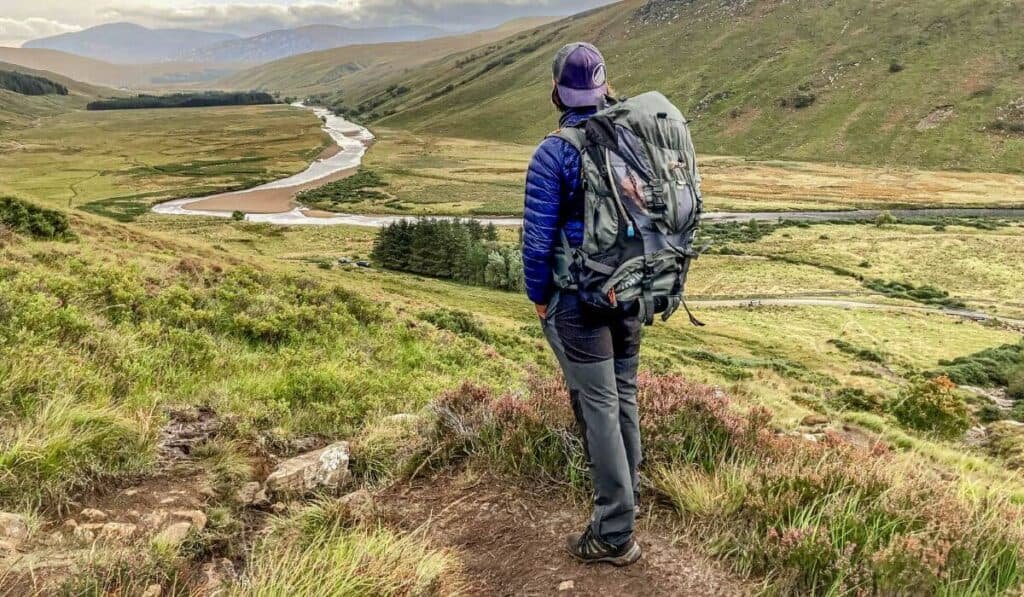
3. Liathach
Liathach is a renowned mountain located in Glen Torridon, in the Northwest Highlands of Scotland. It’s often regarded by mountaineers and hillwalkers as one of the finest mountains in Scotland.
The name Liathach is derived from the Gaelic word meaning “the grey one.” The mountain stands between Loch Torridon and the neighbouring mountain Beinn Eighe, adding to the dramatic landscape of the region.
Liathach is known for its rocky ridges and steep terrains. The main ridge of Liathach has two Munros, Spidean a’ Choire Leith and Mullach an Rathain. A traverse of this ridge is considered one of Scotland’s most exciting and challenging scrambles.
The ascent to Liathach is a challenging walk due to its steep slopes and complex topography. It offers a stunning view over one of Scotland’s true wilderness areas, making it a thoroughly rewarding experience.
Ascent: 1326 m (4,350 ft)
Hiking Distance: 7.25 miles (11.5 km)
Hiking Time: 8-10 hours
Rock Type: Sandstone (hard)
Climbs: 218 – Scrambling, Trad, Winter
4. Stac Pollaidh
Stac Pollaidh is a prominent mountain located in the Northwest Highlands of Scotland. Known for its rugged and rocky crest, which is composed of Torridonian sandstone, this mountain features many pinnacles and steep gullies.
Often anglicised to Stac Polly, this mountain is part of the Coigach range in the region of Assynt. Although it’s not a large mountain (its peak is at 612 meters or about 2,000 feet), it’s well-known for its distinctive shape and the incredible views from its summit.
The ascent of Stac Pollaidh is relatively short but steep, with the entire circuit walk being around 3 kilometres. The path is well maintained, making it a popular choice for hill walkers. The hike up to the ridge is optional, but those who do make the climb are rewarded with panoramic views of the surrounding landscape, including the nearby peaks of Cul Mor and Suilven.
One interesting aspect of Stac Pollaidh is that it’s eroding rapidly, which means its shape is constantly changing. This erosion reveals ancient fossils and makes Stac Pollaidh a place of interest not only for hikers but also for geologists.
We call Stac Pollaidh, scramble mountain, there are tonnes of fun little scramble routes to take and a little challenge to get to the true summit. For us, the effort vs the reward is unmatched on any other mountain in Scotland.
Ascent: 612 m (2,007 ft)
Hiking Distance: 2.75 miles (4.5 km)
Hiking Time: 2-4 hours
Rock Type: Sandstone (hard)
Climbs: 89 – Scrambling, Trad, Winter

5. Buachaille Etive Mòr
Buachaille Etive Mòr, often simply referred to as ‘The Buachaille’, is a majestic mountain located at the head of Glen Etive in the Highlands of Scotland. Its name translates from Gaelic to mean ‘the great herdsman of Etive’.
This mountain is distinguished by its almost perfect pyramidal form, visible from the main A82 road when approaching from Rannoch Moor. It features two main peaks: Stob Dearg (1021.4 m), which is most noticeable due to its iconic conical shape, and Stob na Bròige (956 m).
Buachaille Etive Mòr is known for its rock climbing routes and is considered one of the most photographed sights in Scotland, largely due to its striking shape and its location at the entrance to Glencoe.
The hike up Buachaille Etive Mòr offers breathtaking views of Rannoch Moor, Loch Etive, and the surrounding mountain ranges. The ascent is challenging, including steep and rocky terrains, but it’s also incredibly rewarding.
Ascent: 1,110 m (3,641 ft)
Hiking Distance: 8 miles (13 km)
Hiking Time: 7-9 hours
Rock Type: Rhyolite
Climbs: 316 – Scrambling, Trad, Winter
6. Old Man Of Storr
The Old Man of Storr is one of the most iconic natural features of Scotland’s Isle of Skye. Located on the north side of the island, in an area known as ‘Trotternish’, it’s a large pinnacle of rock that stands high and can be seen for miles around.
The term “Storr” itself refers to the rocky hill on the Trotternish peninsula where the Old Man stands. This hill is part of the longest geological landslip in Great Britain. The ‘Old Man’ is a 55m high needle of rock that has majestically withstood weathering and erosion more than the land around it.
The Old Man of Storr is not only important geologically but also holds significant cultural importance. It is the subject of various myths and legends. One such legend says that the ‘Old Man’ is actually the thumb of a giant buried in the ground.
The hike up to the Old Man of Storr is one of the most popular on the Isle of Skye – and for good reason. While the walk up is reasonably steep, hikers are rewarded with dramatic landscapes and panoramic views over the Sound of Raasay and the mainland.
The start of the walk is by the main road from Portree to Staffin on a well-maintained path. We loved capturing dramatic shots of Storr, even though we were hoping for quintessentially Scottish moody skies 😆
Ascent: 340 m (1,115 ft)
Hiking Distance: 3 miles (5 km)
Hiking Time: 1.5-2 hours
Climbs: 11 – Scrambling, Trad, Winter

7. Suilven
Suilven is a prominent mountain located in the Assynt area of Sutherland, in the far North West Highlands of Scotland. It’s known for its distinctive shape and remote location, making it one of Scotland’s most recognisable and admired mountains.
Despite its modest height of 731 meters (2,398 feet), Suilven’s remarkable outline makes it appear more imposing. The mountain is characterized by a 2km long rocky ridge rising straight up from sea level, providing a challenging climb for hikers.
Suilven has several routes to reach the summit, all of which come with their own challenges due to the steep ascent. The summit of Suilven, known as Caisteal Liath, offers panoramic views of the surrounding wilderness, making the tough climb worthwhile.
Ascent: 947 m (3,106 ft)
Hiking Distance: 12.5 miles (20 km)
Hiking Time: 7-9 hours
Rock Type: Sandstone (hard)
Climbs: 10 – Scrambling, Trad, Winter
8. Cairn Gorm
Cairn Gorm is part of the Cairngorms range and the broader Grampian Mountains. The name “Cairn Gorm” comes from the Scottish Gaelic “An Càrn Gorm,” which means Blue or Green Hill. This mountain is the sixth highest in Britain and lends its name to the entire range of mountains in this area.
Climbing Cairn Gorm is generally considered straightforward. The Cairngorm Mountain car park is high up the ascent and for those wanting to summit without the effort, there’s also a funicular railway that can take you to Britain’s highest restaurant, the Ptarmigan.
From the top station, it’s a walk along a clear, rocky path to the summit. As you get closer to the top, there are a series of cairns (man-made piles of stones) that appear in a line as if guiding you to the top.
For a more challenging climb, head towards Trump Towers and Fiacaill Ridge, which is a grade II scramble. We took this route on a winter climb and had the most amazing experience.
Ascent: 775 m (2,542 ft)
Hiking Distance: 6.75 miles (11 km)
Hiking Time: 5-6 hours
Rock Type: Granite
Climbs: 343 – Scrambling, Trad, Winter
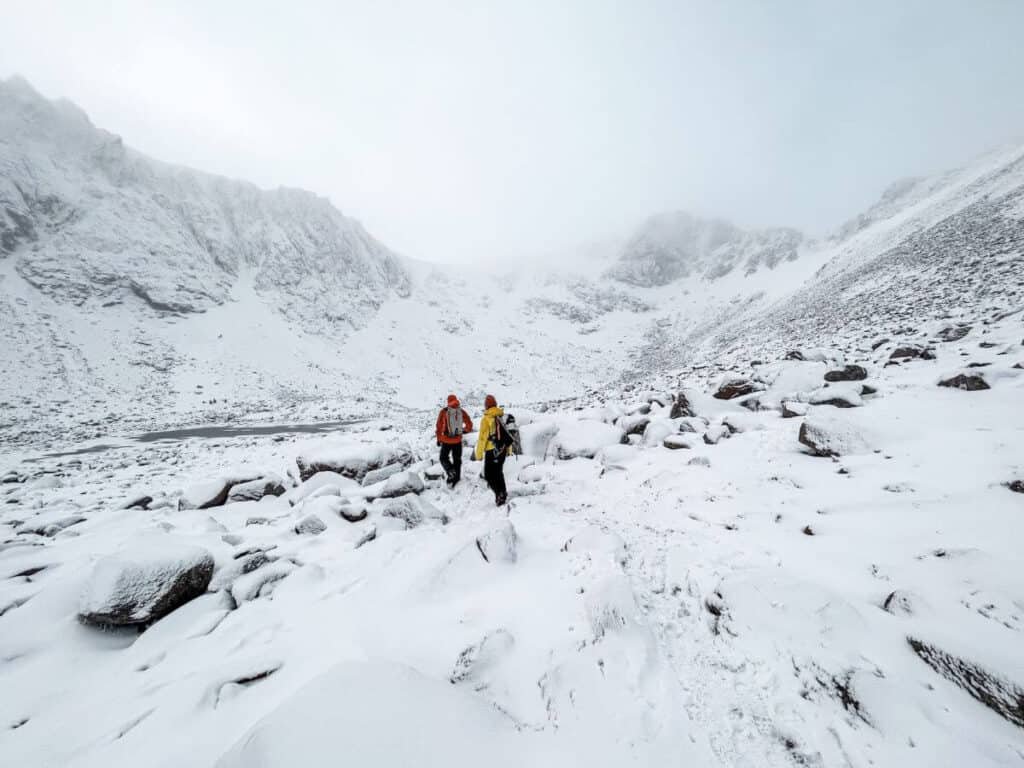
9. Ben A’an
Ben A’an is one of the most popular hills in Scotland, often referred to as a mountain in miniature due to its distinctive peak. Located in the heart of the Trossachs, it offers breathtaking views of Loch Katrine and Loch Achray.
The hill’s name translates to “small pointed peak” in Gaelic, accurately describing its appearance. From its summit, you can enjoy panoramic views of the surrounding landscape, including the nearby hills of Ben Venue and Ben Ledi.
The trailhead for Ben A’an starts from a car park off the A821 road, between the towns of Callander and Aberfoyle. The path up the hill has been well maintained and includes built steps, making it accessible even for novice hikers.
While the climb can be strenuous due to its steepness, the reward at the top is worth the effort. The stunning views from the summit make it a popular spot for photography, and on a clear day, you can see as far as the city of Stirling.
Ascent: 340 m (1,115 ft)
Hiking Distance: 2.25 miles (3.7 km)
Hiking Time: 2-4 hours
Rock Type: Schist
Climbs: 28 – Scrambling, Trad
10. The Cobbler (Ben Arthur)
The Cobbler, also known as Ben Arthur, is a mountain situated in the Southern Highlands of Scotland in the Argyll and Bute area. It’s renowned for its distinctive outline, making it one of the most recognised mountains in Scotland.
While it may not be the highest mountain in Scotland, its challenging terrain and unique profile make it a popular choice among hikers and climbers. The mountain got its name, “The Cobbler,” because its silhouette resembles a cobbler at work.
The most common route to climb The Cobbler starts from the village of Arrochar near Loch Long. This route is casual with no significant difficulties, making it accessible for most walkers with average fitness levels.
The mountain is also famous among rock climbers due to its interesting rock formations and routes. One of the highlights for climbers is the ‘threading the needle’ challenge on the summit, which involves climbing through a hole in the rock to reach the true summit.
Ascent: 920 m (3,018 ft)
Hiking Distance: 6.75 miles (11 km)
Hiking Time: 4-6 hours
Rock Type: Mica schist
Climbs: 160 – Scrambling, Trad, Winter

11. Blà Bheinn
Blà Bheinn, also known as Blaven, is a magnificent mountain located on the Isle of Skye in Scotland. It’s considered one of the most spectacular mountains in Britain due to its isolated nature and stunning views.
The mountain is usually regarded as an outlier of the Black Cuillin, a range of rocky mountains located on the Isle of Skye. Despite this, Blà Bheinn stands apart from the main ridge and is the only Munro on Skye that is not part of the main Cuillin ridge.
Blà Bheinn offers a challenging but rewarding climb. The walk up to the summit provides hikers with panoramic views of the surrounding landscape, including the rest of the Black Cuillin and the islands of Rum and Eigg.
Several walking routes lead to the summit of Blà Bheinn, each offering its own unique perspective of the mountain and its surroundings. The routes generally start from the head of Loch Slapin, and while steep in places, they are less difficult than the scrambles found on the main Black Cuillin ridge.
Ascent: 990 m (3,248 ft)
Hiking Distance: 5 miles (8 km)
Hiking Time: 5-6 hours
Rock Type: Gabbro
Climbs: 49 – Scrambling, Trad, Winter
What Are The Three Major Mountain Ranges In Scotland?
The Highlands & Islands, the hills of the Central Lowlands and the Southern Uplands are the 3 main mountain ranges in Scotland.
What Is The Most Beautiful Mountain In Scotland?
Buachaille Etive Mòr is arguably one of the most beautiful mountains in Scotland. It’s also one of the most recognisable mountains in Scotland with its pyramid form that is often seen on postcards. Its Gaelic name means ‘the great herdsman of Etive’ as it’s located at the head of Glen Etive in the Highlands of Scotland.
On the other hand, Ben Nevis is not only the highest mountain in Scotland (and the whole of the UK) but is also admired for its natural beauty. It attracts an estimated 75,000 people a year who ascend via its main hiking route, the Mountain Track.
Another contender is Liatach in Glen Torridon, which is considered by many to be one of the most beautiful mountains in Scotland. Each mountain has its unique charm and beauty, and the best one for you would depend on what kind of scenic views, hiking experience, or adventure you’re seeking.
What Is Scotland’s Biggest Mountain?
Scotland’s biggest mountain is Ben Nevis. Standing at a height of 1,345 meters (4,411 feet) above sea level, it is not only the tallest mountain in Scotland but also the highest in the entire United Kingdom and the British Isles. Located near the town of Fort William in the Scottish Highlands, Ben Nevis is a popular destination for hiking and mountaineering.
Scotland Has 10 Mountains Over 4,000ft / 1,220m
- Ben Nevis (Beinn Nibheis), 4,411.1 ft (1,344.5 m)
- Ben Macdui (Beinn Macduibh), 4,295 ft (1,309 m)
- Braeriach (Am Bràigh Riabhach), 4,252 ft (1,296 m)
- Cairn Toul (Càrn an t-Sabhail), 4,236 ft (1,291 m)
- Sgòr an Lochain Uaine, 4,127 ft (1,258 m)
- Cairn Gorm (An Càrn Gorm), 4,084 ft (1,244.8 m)
- Aonach Beag, 4,049 ft (1,234 m)
- Aonach Mòr, 4,004 ft (1,220.4 m)
- Càrn Mòr Dearg, 4,003 ft (1,220 m)
- Ben Lawers (Beinn Labhair), 3,983 ft (1,214 m)

What Are The Mountains In Scotland Called?
Munros, Corbetts, Grahams, Donalds and Marilyns. These are the names affectionately given to Scotland’s peaks. Each name is used to indicate the height of each summit.
How Are The Mountains In Scotland Categorised?
Scottish summits are categorised by height:
Munro over 3,000ft / 914m
Corbett 2,500ft – 3,000ft / 762m – 914m
Graham 2,000ft – 2,500ft / 609m – 762m
Donald 2,000ft / 609m
Marilyn under 2,000ft / 609m
Munro
A Munro is a peak that sits over 3,000ft / 914m named after Sir Hugh Munro who surveyed and catalogued them in 1891, although he did not climb all 282 peaks.
One mountain isn’t necessarily one Munro, to reach the true peak of some mountains you may first summit another Munro on route, like Liathac for example whose two peaks are Spidean a’Choire Leith and Mullach an Rathain.
The highest, although not known as the most challenging peak in Scotland is Ben Nevis sitting at 4,413ft / 1,345m.
What is Munro bagging?
If you are new to hiking in the UK you may not have come across the term bagging before. Like bagging a Wainwright in the Lake District or peak/hill bagging in other areas, Munro bagging is the same thing. Bagging means summiting and collecting.
Thousands of people have set themselves the task of bagging all 282 Munros in Scotland. In June 2023 ultra runner Jamie Aarons set an astonishing new record of 31 days, 10 hours and 27 minutes.
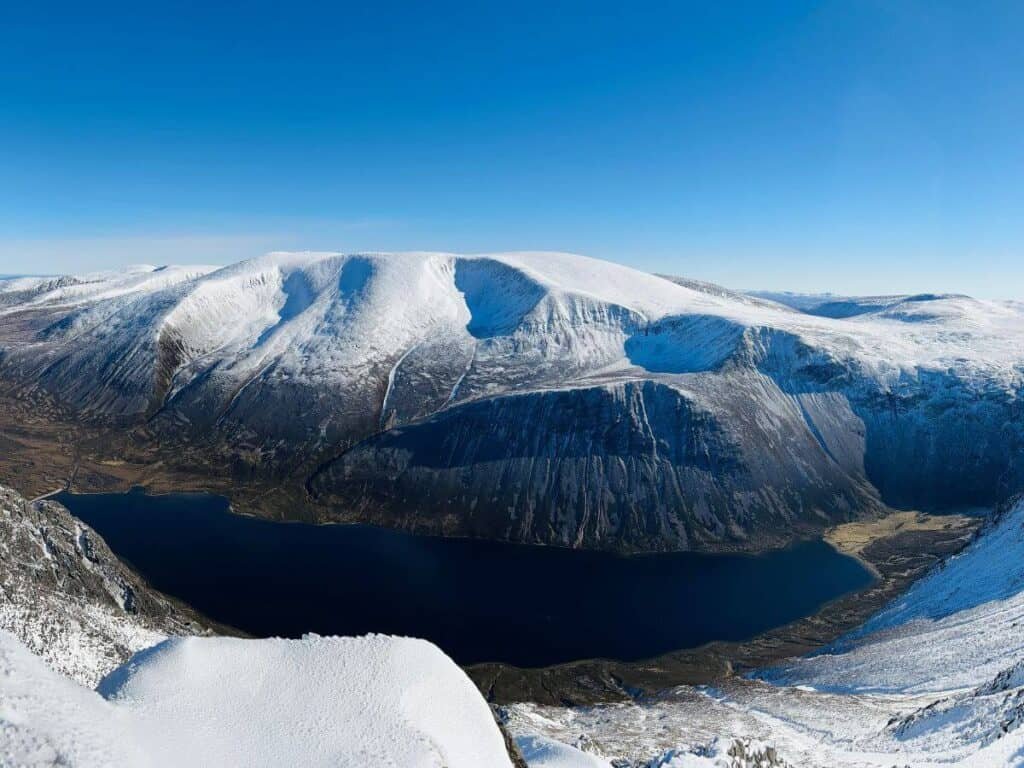
Corbett
A Corbett is a peak that sits between 2,500 and 3,000 ft / 762m – 914m high, with at least 500 feet of descent on all sides. The first list of Corbetts was created in the 1920s by John Rooke Corbett.
There are 222 Corbetts in Scotland, the highest being Beinn a’ Chlaidheimh, at 2,999ft / 914m is just shy of being a Munro.
Climbers who bag all 222 Corbetts are called Corbetteers.
Graham
A Graham is a peak that sits between 2,000 and 2,500ft / 609m – 762m, with at least 150 metres of descent on all sides. The list of Grahams was published in 1997, created by Alan Dawson and Fiona Graham.
There are 219 Grahams in Scotland, the highest being Beinn Talaidh at 2,499ft / 762m on the Isle of Mull.
Climbers who bag all of the Grahams are called Grahamists.

Donald
A Donald is a peak that sits above 2,000ft / 609m and can be found in the Scottish lowlands. The list of Donalds was created in 1935 by Percy Donald.
There are 140 Donalds in Scotland, the highest being Merrick at 2766ft / 843m. Many Donalds are also Corbetts or Grahams.
Marilyn
A Marilyn is a peak that sits under 2,000ft / 609m and can be found in the UK and Ireland. The list of Marilyns was created by Alan Dawson in 1992. The name was intended as a pun in contrast to the name Munro.
There are 1,219 Marilyns in Scotland, including 202 of the 282 Munros, all 222 Corbetts, all 219 Grahams, and 31 Donalds. Some Munros are not Marilyns because they do not have sufficient height relative to the surrounding terrain, Munros with a Marilyn–prominence are often called Real Munros.
Starting Your Peak Bagging Journey
Not everyone will be interested in peak bagging a whole list of peaks above a certain height. When it comes to hiking and climbing we chose peaks for a variety of reasons: location, views, and time of year.
We never hike if the weather looks sketchy or too changeable. we much prefer to enjoy the journey and be able to sit and eat our lunch while enjoying the views from the top. Bad weather equals miserable hiking and no views.
It’s also important to note that if you’re new to hiking/climbing be aware of the potential weather changes and have the right gear. We have witnessed countless times people walking up peaks with little to no gear, in really inappropriate clothing or footwear.
While even some of the higher peaks may have an “easy” route, the temperature can drop dramatically from base to summit and if you get caught in fog (which is highly possible in the UK) an incorrect step can be fatal. Always do your research and be prepared.
If you want to record your peak bagging with notes, pictures and an interactive map, head over to Walking Highlands and set up a profile.
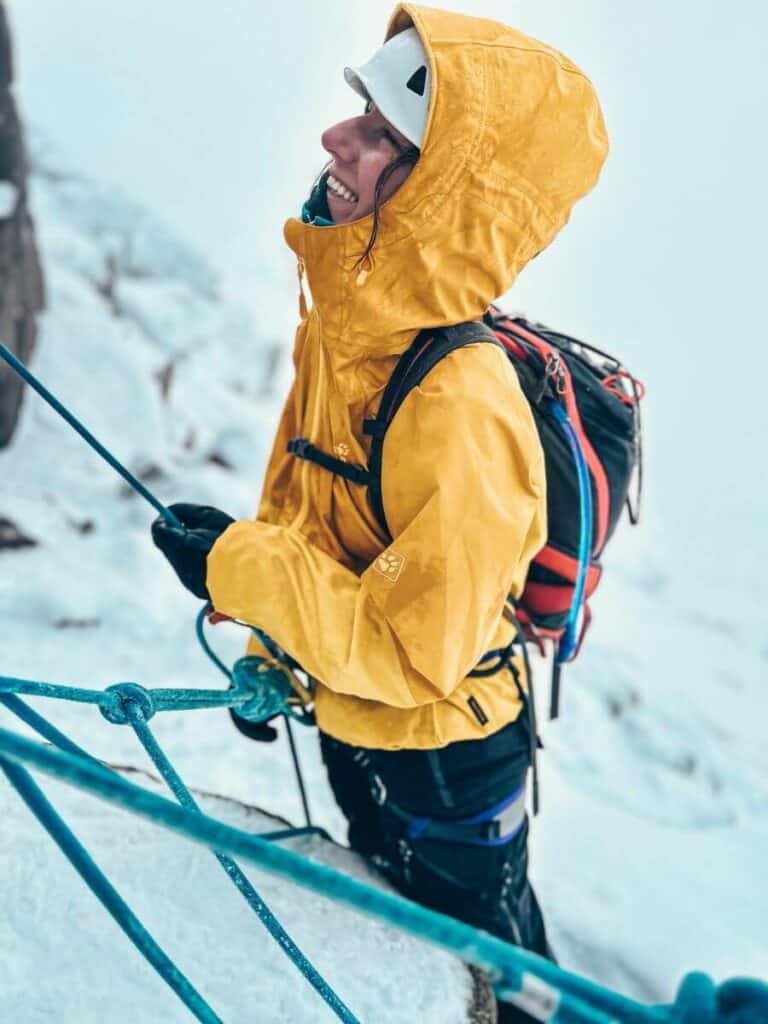
Are There Mountains Near To Cities In Scotland?
Glasgow: Glasgow is surrounded by several magnificent mountains and hills. Ben Lomond is one of the most popular, located on the eastern shore of Loch Lomond and within easy reach of the city. The Campsie Fells and the Kilpatrick Hills are also easily accessible from Glasgow.
Edinburgh: Arthur’s Seat, an ancient volcano and hill located in Holyrood Park, is right in the heart of Edinburgh. While it’s not as tall as many of Scotland’s mountains (at 251m high), it provides stunning views of the city. For a more challenging hike, the Pentland Hills are just a short drive from the city centre.
Aberdeen: Aberdeen is close to the Cairngorms National Park, home to five of the six highest mountains in Scotland, including Ben Macdui and Braeriach.
Inverness: The city is near the Northwest Highlands, which include the Torridon Hills and Ben Wyvis, a popular spot for hillwalking.
Dundee: Dundee is near the Angus Glens, where you can find several Munros (mountains over 3000ft), such as Mount Keen.
What Is The Most Picturesque Part Of Scotland?
The most picturesque part of Scotland is often considered to be the Isle of Skye. Known for its rugged landscapes, dramatic cliffs, and captivating history, the Isle of Skye offers breathtaking views around every corner.
The island’s notable features include the Old Man of Storr, a large pinnacle of rock that stands high and can be seen for miles around. The Quiraing, an extraordinary landslip on the Trotternish Ridge, is another must-see location, offering some of the most distinctive landscapes in Scotland.
Other stunning locations on the Isle of Skye include the Fairy Pools, a series of clear, cold pools and waterfalls, and Neist Point, known for its historic lighthouse and panoramic views of the sea and cliffs.
The Isle of Skye is certainly one of our favourite destinations in Scotland and offers a whole range of activities, from beautiful sights to challenging peaks.
One of the other main attractions in Scotland is the famous NC500, also known as Route 500, a stunning 514-mile coastal road around the most northern part of this enchanting country.
However, beauty is subjective, and Scotland is a country rich in stunning landscapes. Other contenders for the most picturesque part could include Glencoe, Loch Lomond, or the Cairngorms National Park. Each place has its unique charm and scenic beauty.
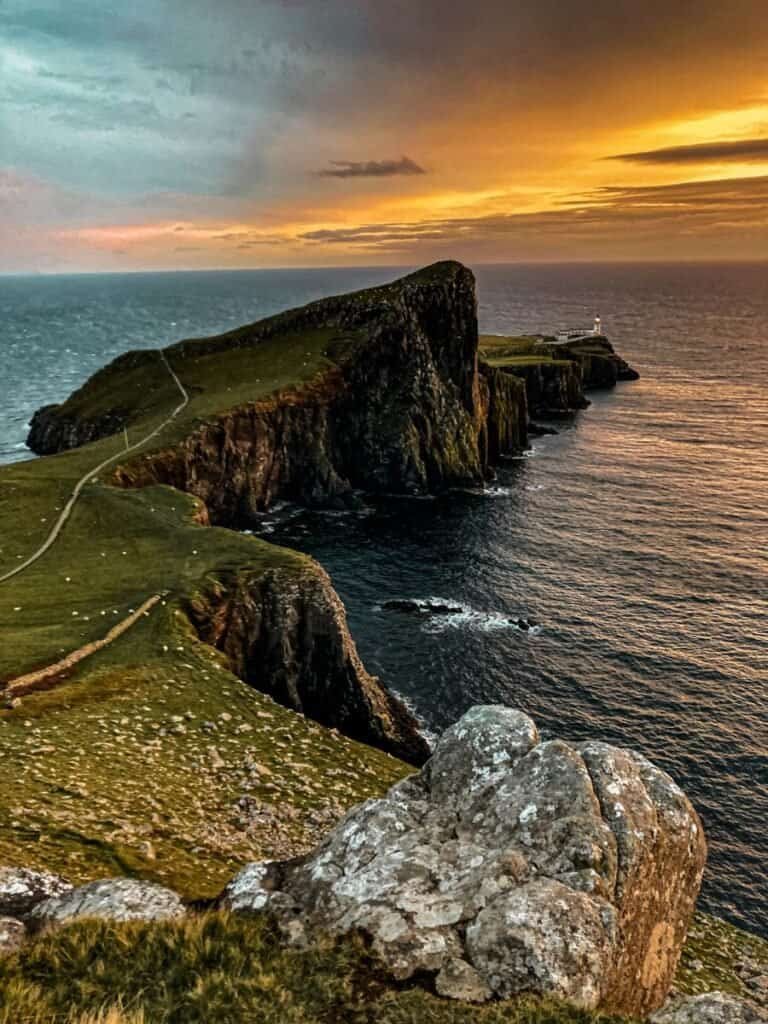
When Is The Best Time To Visit Scotland?
For mountain activities, the best time to visit Scotland is during Spring (March-May) and Autumn (September-November). During these months the temperatures will be cooler but not icy cold and you’ll have fewer midges and tourists to battle with.
Unless of course, you’re after some winter hiking, climbing or maybe even some snowsports. In this case, keep an eye on the snow conditions between December-March.
The Wrap-Up | 11 Best Mountains In Scotland For Adventurers
Scotland’s rich tapestry of mountains provides a captivating and diverse playground for adventurers. From the imposing peaks of the Highlands to the rugged beauty of the islands, each mountain offers its own unique challenges and rewards.
Whether you’re an experienced mountaineer or a casual hiker seeking stunning views, Scotland’s mountains cater to every taste and skill level. As we’ve explored in this article, the 11 best mountains in Scotland offer an unrivalled blend of natural beauty, physical challenge, and the deep satisfaction of achievement.
So pack your gear, lace up your boots, and set out on your next adventure. Remember, the mountains in Scotland are not just natural landmarks to be ticked off a list, but places of wonder and exploration that will leave lasting impressions. Happy adventuring!
